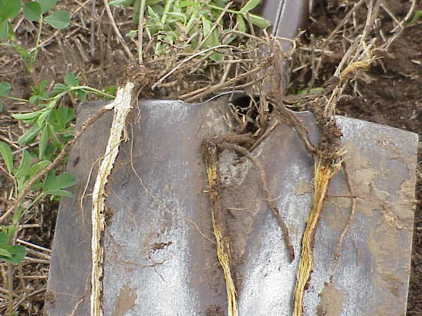
Apr 12, 2019, 10:00 AM
Alfalfa Winterkill
Every year in some of our northern geography there are concerns about alfalfa winterkill. Sometimes, it is widespread and well anticipated, and other times it is a surprise. Many people talk about and try to predict the severity of winterkill, but waiting for spring to walk the field is the only sure way of knowing.
FACTORS TO CONSIDER
Harsh weather negatively influences alfalfa survival:
- Soil conditions, such as wet or ponded spots, combined with cold temperatures
- Snow cover provides insulation from freeze-thaw cycles, or warm-ups followed by harsh cold
Management can also play a role:
- Poor fertility – particularly low potassium puts alfalfa at risk
- Keep pH between 6.5 and 7
- Young stands are at less risk than old stands
- Alfalfa harvest in mid to late September is not recommended
- Alfalfa benefits from proper dormancy onset
- Plant a variety with a good winter survival score
- Select an alfalfa with a good disease resistance package
ACTION PLAN
- Stands slow to green-up: If the entire field is not greening up, give it more time – even if the neighbor’s field is greening up. It likely needs more heat and time to come out of dormancy. Field variation and soil type affects green up or winterkill.
- Check plant and root health: If green-up is spotty, check individual plants within spotty patches to see if they have signs of life.
- Are there any buds developing, or any stems starting to grow?
- Dig up a plant and look at the roots after splitting them open.
- Healthy roots should be firm and white in color with little evidence of root rot.
- Winter-killed roots will have a tan/brown color and the tissue will be stringy or pithy.
- Did the roots break due to frost heaving?
 Live root on left and two dead on right.
Live root on left and two dead on right.
From: Assessing Alfalfa Stand Conditions in the Spring*
- Evaluate the stand: Assess the percent of the field that has dead patches and decide if planting another forage crop in those spots is better than rotating out of alfalfa. It is not recommended to reseed or overseed alfalfa into these areas as autotoxicity may prevent successful thickening of the alfalfa stand.
- Assess forage needs: The tables below (from Forage Options Following Alfalfa Winterkill **) compare a few cropping options if forage is needed, and the field is rotated out of alfalfa.

April-May planting

May-June planting
SUMMARY
There are many weather and environmental factors that affect winterkill. Where reasonable, implement known management practices that reduce the risk of winterkill. Once alfalfa is dormant, there is no real way to manage winterkill. For more information, contact your Legend Seeds team.

